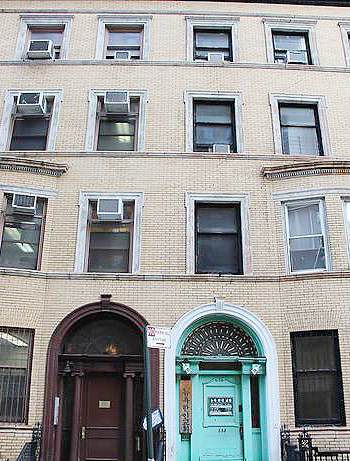- California Assembly OKs highest minimum wage in nation
- S. Korea unveils first graphic cigarette warnings
- US joins with South Korea, Japan in bid to deter North Korea
- LPGA golfer Chun In-gee finally back in action
- S. Korea won’t be top seed in final World Cup qualification round
- US men’s soccer misses 2nd straight Olympics
- US back on track in qualifying with 4-0 win over Guatemala
- High-intensity workout injuries spawn cottage industry
- CDC expands range of Zika mosquitoes into parts of Northeast
- Who knew? ‘The Walking Dead’ is helping families connect
Historic NY Korean church building nears end
By The Korea Times New York staff
The New York Korean American community is preparing to say goodbye to a building embedded in its history.
The Korean Methodist Church and Institute building, located at 633 W. 115th St. near Columbia University, was bought by the church in 1927 and stood as the city’s first Korean American church.
The church said it will hold its last service there this weekend before the building is torn down and rebuilt, a project that is expected to take about two years.
The church building has not only been a place for religious practice — through its doors have walked independence activists and prominent South Koreans like Soh Jaipil, a noted journalist, Cho Pyung-ok and Syngman Rhee, the first president of South Korea.
During Japanese colonial rule in Korea, it was used as a space for activists, workers and foreign students from Korea to gather in a push for independence.
The building is also a storage for historic documents, from a recently discovered 1919 letter written by the church to Japanese police about the sexual abuse of a female student following the March 1 independence movement, to a manifesto against Japanese invasion in Manchuria by an allied group of Korean organizations in New York in 1931 unearthed earlier this month.
The South Korean government, recognizing the building’s importance, has categorized it as an overseas historic site.
Still, because of the age of the building, it has increasingly become difficult to hold church service inside. Plans to preserve the facade of the building, if it would not breach safety concerns, are also being looked into, the church said.
The church plans to install a memorial hall inside the new building when it is finished, comprising of artifacts, photos and documents from the independence movement, as well as the piano that is believed to have been used by composer Ahn Eak-tai to compose the “Aegukga,” South Korea’s national anthem.

















Pingback: Historic Korean Church Holds Final Services - Voices of NY